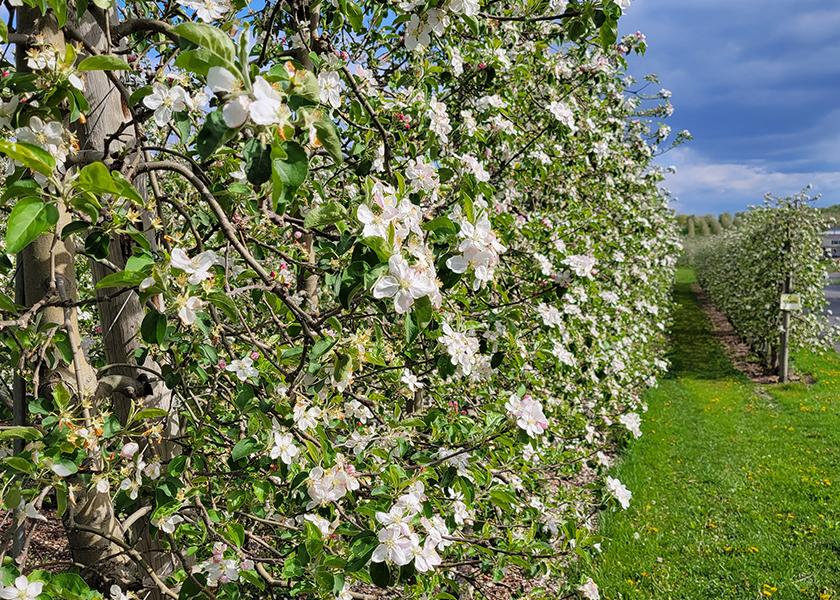New York Apple Association reports signs of early blossom

New York apple growers reporting signs of blossom a few days earlier than usual this year.
Orchards are already experiencing full bloom in some parts of the states, with signs of a promising crop unaffected by varied spring temperatures, according to a news release.
"New York State's weather hit some high 70- to low 80-degree temperatures in April, followed by some low temperatures; but overall, everyone is optimistic that this year will yield a good crop. We always like to start the new crop optimistically," Cynthia Haskins, president and CEO of the New York Apple Association, said in the release.
Apple trees in the Hudson Valley area typically bloom 5-7 days before Mother's Day; upstate central and western New York usually have blossoms peaking around the holiday, followed by northeastern New York about a week after, according to the release. Growers report that the bloom will be earlier by about a week throughout the state.
Apples themselves have yet to begin growth, but reports of good return bud, pollinator activity and no damaging weather events in spring have created orchard conditions that growers are describing as “extremely promising,” according to the release.
New York’s 600 family-owned orchards produce apples on over 50,000 acres throughout the rural areas of the state. Apple harvest begins around mid-August with early season varieties, moving into September and peaking in October.
Readying retailers
NYAA is reminding retailers that there are still promotable volumes of New York state apples. Packinghouses are busy, with good volumes on mcintosh, red delicious, fuji and more, according to the release.
The apple association is preparing for the fall harvest with new promotions and partnerships.
“We are working with our apple shippers to create impactful promotions that reach customers across the full spectrum of their shopping options, including in-store, online, and through pick-up and delivery services,” Haskins said.
NYAA said it will unveil a redesigned merchandising unit for the fall season and will continue working with retailers, offering e-coupon redemption programs, apple sampling, digital and print cooperative advertising, geotargeted social media advertising and merchandising support. NYAA also offers retailers a library of apple images, content and more than 295 recipes for newsletters and social media, according to the release.

Apples in the classroom
The New York Apple Association said it is shipping its Partners in Pollination posters to school districts to mark apple blossom time in the state. The posters can be used to teach students about the importance of cross-pollination and how pollinator species like bees are crucial to apple production.
"Educating students on where their food comes from and how it is produced is important,” Haskins said. “We love to see the amazement on the kids’ faces when they learn that the apple flowers grow into the apples they eat.”
NYAA said it surveyed schools earlier this year to better understand their apple sourcing process. The association is also working with distributors to better inform them about the state’s role as the country's second-largest producer of apples — and as a closer source for many school distributors and schools.
Sourcing within the state
Schools are also committing to source food products from New York state growers.
The “30% New York State Initiative” provides school food authorities with increased state reimbursement up to 25 cents per meal for any district that purchases at least 30% of ingredients for their school lunch program from New York farms. The initiative aims to provide healthy, farm-fresh products to children — with participating school food authorities — to the best extent possible, reaching the required threshold and limiting the inclusion of a la carte snack foods, according to the release.
The NYAA said the program helps strengthen the economic resilience of orchards and farms across the state.







